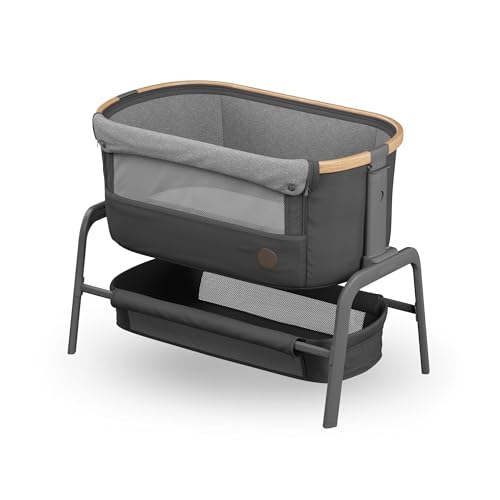How to Choose a Sale Cot
Mortuary cots are an essential piece of equipment for funeral homes and hospitals. They allow staff to safely and with respect transport bodies. They also provide a hygienic and comfortable place to rest the body.
COTS products play an important part in the federal marketplace, but they aren't easy to manage. This blog will discuss how COTS can be integrated into GSA schedules and other rules for government procurement.
Cost-effectiveness
The use of commercial-off-the-shelf (COTS) products allows procurement agencies to gain efficiencies by purchasing items that are readily available from the marketplace. This can reduce the time to develop as well as the cost of life. It also allows procurement agencies to take advantage of the latest technological advances and experience in the field.
It is crucial to keep in mind that COT definitions can be subjective, and that different organizations will interpret COTS items in a different way. This can pose a problem for manufacturers who rely on a consistent method of calculating accurate government pricing. Wholesalers and GPOs, for instance, typically have an inventory that is not identical to the list used by manufacturers to determine government pricing. A written SOP and COTS Reference Library are vital elements to implement an efficient and uniform method of assigning COTs.
Reliability
A sale cot is a vital purchase for mortuary services. It must be durable and sturdy enough to withstand heavy use. It should be easy to transport and to set up. In the event of any issues following purchase the manufacturer must provide excellent customer service. Also, consider the feedback of your staff before making the final decision. They are the actual users of the cots and will provide you with information about its durability and reliability.
Wholesalers and GPOs give COT designations which do not match the list of the manufacturer. This is a result of many factors, including changing business models, mergers and acquisitions. This poses challenges to the application of an unreliable lens to classify COTS.
Durability
Durability is key for sale cots since they have to be able to withstand heavy use and frequent transport. Funeral homes often use these cots for displaying body remains, and they have to be strong enough to withstand the weight of the casket as well as other items that are placed on the top. Cots must also be resistant to corrosion and have a stable structure that is simple to put together and disassemble. It is also important to select a supplier that provides customer service and can help with any issues that might occur after purchasing.
Solid wood cots are the ideal furniture for babies, because they are sturdy and less likely to contain toxic chemicals or off-gassing as compared to composite materials like MDF or Chipboard. They also look more appealing than less expensive alternatives.
The Westport design by Silver Cross is a great option for those who want the cot and lounger in one. It's made of a sturdy material and comes with three different levels of height suitable for growing babies. The instructions can be confusing but the crib is worth it once you understand them.
The Helinox Cot One may be the lightest cot, however, it's not as durable as the other models we've tested. It also has a lot of parts and therefore takes longer to assemble than other cots. However, it's very comfortable and is a great choice for backpackers. most recommended cribs 's also 14 oz lighter than Thermarest Luxury Lite and Sleep Rite.
Safety
If you're providing cribs, make sure they comply with the product safety standard. This is a vital step to prevent injuries and deaths for children. This can be done by asking your supplier whether their products have been tested independently. Request them to supply you with a copy of the results. You can also schedule your own test.
No matter if you're buying new or second hand it's crucial to make sure the safety of your cot before you let your baby sleep in it. You should look for a certification of conformity from the manufacturer, and detailed labels and warnings. It should also be free from any sharp edges, protrusions, or gaps that could trap the child's leg or finger. In addition, there should be no footholds within the cot that children could use to climb out.

When choosing a cot, check that the mattress is flat and clean. It should be able to fit comfortably with no gaps. The bottom edge of the lowest rail should not be higher than 30mm away from the base of the mattress. If the base of the cot is adjustable, ensure it is set to the lowest position.
In top ranked cribs , ensure that the slats and filler bars are securely fixed and don't have small holes that could catch clothing. Bolts, nuts and corner posts must not protrude more than 5mm to prevent a child from being able to catch their fingers. Also, make sure that the crib is free of loose blinds and curtains that can be grabbed by tiny hands.
Finally, look for a label that indicates that the cot has been tested to the mandatory standards and complies with Australian Standards AS/NZS 2172:2003 Cots for use in households and safety requirements. This is the only way to be sure that the cot you're purchasing is safe and suitable for sleep. It is against the law for antique stores, dealers, and second-hand stores to sell antique cots with no labels or certificates.
Accidents can occur, despite the fact that the majority of designers and manufacturers try to make sure that their products are safe. Older cots that have been used by children of other ages may not meet current safety standards, and could be a risk of suffocation, strangulation or ingestion of foreign bodies.
